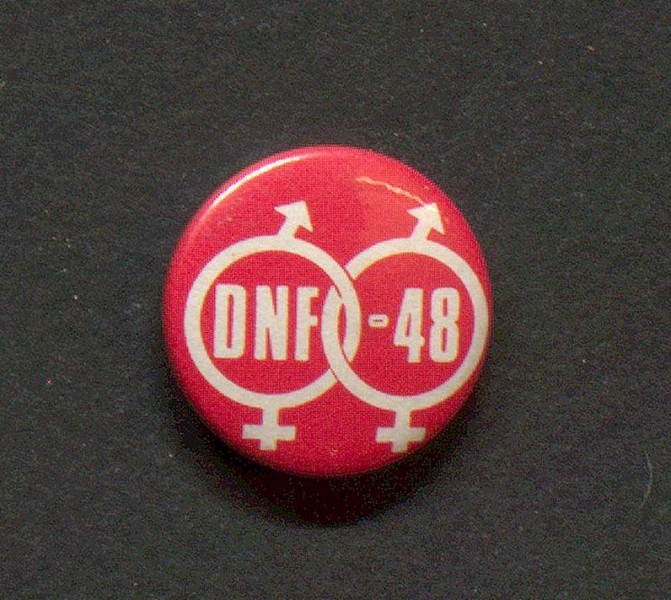Det Norske Forbundet av 1948
Det norske forbundet av 1948 was the first Norwegian organisation for homosexuals, and one of the progenitors of the modern day LGBTQ organisation LLH. It started as a branch of the Danish Forbundet af 1948 and became an independent organisation in 1953.
Establishing a Norwegian branch
In 1949 Forbundet af 1948 appointed two representatives in Norway, one in Trondheim and one in Oslo. These were dubbed local sections of the Danish organisation, but in practice activity was minimal (Eikvam 2000:14). In 1950 one of the Norwegian members, Bjørn Hansen, published an article inVennen (3/1950) where he argued for the creation of a joint Norwegian branch. He also announced that the chairman of the Danish organisation, Aksel Lundahl Madsen, would visit Norway to discuss the future of the Norwegian branch.
On May 20th, 1950, a meeting was held at Bislett hospits in Oslo to mark the foundation of Den Norske Seksjon, Forbundet af 1948, or, the Norwegian section of Forbundet af 1948. Rolf Løvaas was elected chairman, and the board also included Arne Heli and Øivind Eckhoff.
Indenpendet organisation
The collaboration between Copenhagen and Oslo proved difficult to maintain, and after internal conflicts and tension and a gradual separation it was decided on February 1st 1953 that Den Norske Seksjon would become the independent organisation called Det Norske Forbundet av 1948 (DNF-48). Dermot Mack was elected chairman of DNF-48, and he remained a board member until 1963, most of the time as chairman.
Times of discretion
After becoming an independent organisation, DNF-48 started distributing their own member's journal, called Klubb-Nytt. This was renamed Oss Imellom in 1958. Although Rolf Løvaas previously had written about homosexuality under his full name in newspapers, DNF-48 led a very low-key operation. The moral panic and scandalization of homosexuality in Sweden and Denmark motivated discretion. The chairman was a strong proponent of discretion and members acting respectably. Eventually, however, some board members and others cautiously engaged in external activities, for example by participating in student organisation meetings.
In 1965 Karen-Christine Friele and a gay man represented DNF-48 in a radio program about homosexuality on national radio - the first of it's kind in Norway. The radio show marks the start of a more open era, both for DNF's activities and in the attitudes towards homosexuality in the general public.
Openness and decriminalization
Karen-Christine Friele was chairwoman of DNF from 1966 to 1971. She eventually used her full name in the media and became the public spokesperson for DNF. In 1972 Friele and DNF's work led to abolishing paragraph 213 in Norwegian criminal law, in effect decriminalizing homosexuality. Another important victory for the organisation was the elimination of homosexuality as a psychiatric diagnosis in 1977.
Discord and mergers
The 1970s saw the dawn of many new gay organisations. Together with the exclusion of many DNF members in 1978 on political grounds, this led to discord in the Norwegian gay rights movement. DNF-48 continued under the same name until 1992, when it merged with Fellesrådet for Homofile Organisasjoner (FHO), an umbrella organisation for many of the new organisations, and formed Landsforeningen for Lesbisk og Homofil frigjøring (LLH), which is still the main Norwegian LGBTQ organisation today.
Sources
Eikvam, Turid. 1984. "På sporet av en svunnen tid. En formann forteller." Løvetann (2): 20-23.
Eikvam, Turid. 2000. "Stiftelsen av DNF-48". Løvetann (1): 14-15.
Kristiansen, Hans Wiggo. 2008. Masker og Mostand. Diskrè homoliv i Norge 1920-1970. Oslo: Unipub.
Løvaas, Rolf. 2000. En nølende formann. Rolf Løvaas intervjuer seg selv. Løvetann (1): 12-13.
Medarbeiderbladet, 1950-1953. København: Forbundet af 1948.
OSS nr 1. 1965. Oslo: Det Norske forbundet av 1948.

